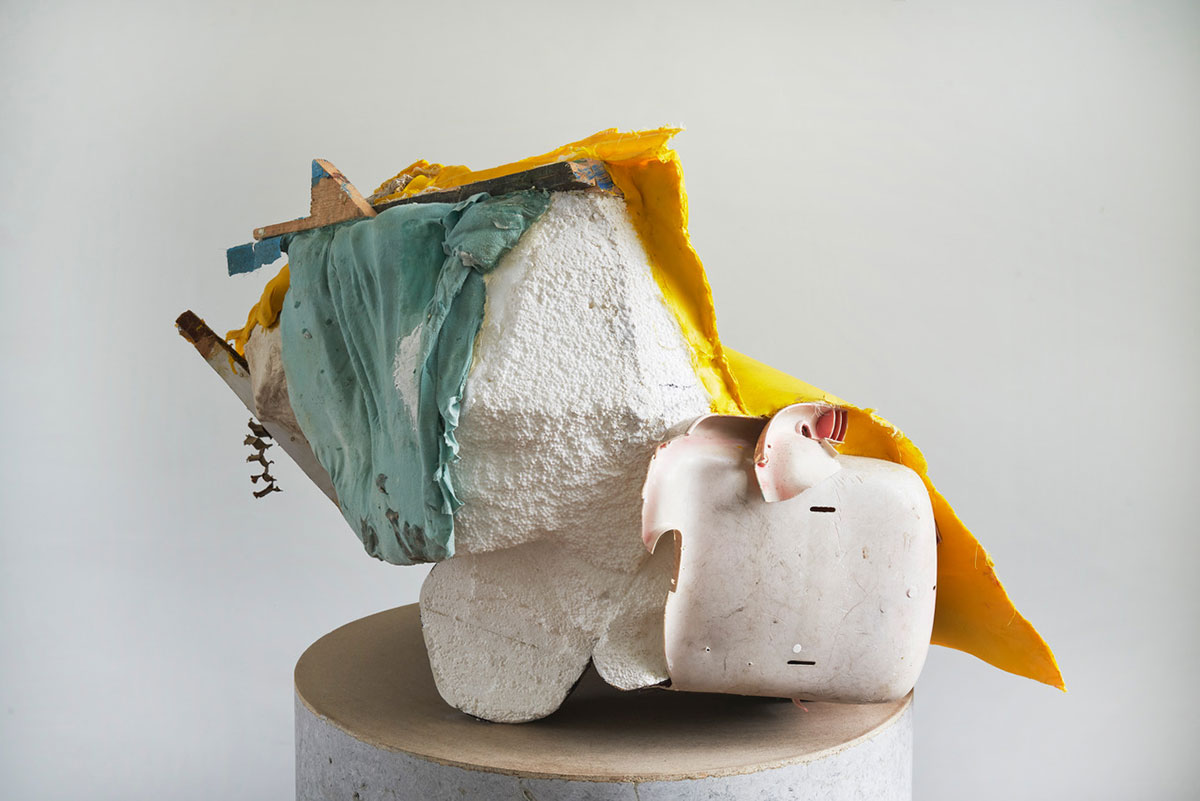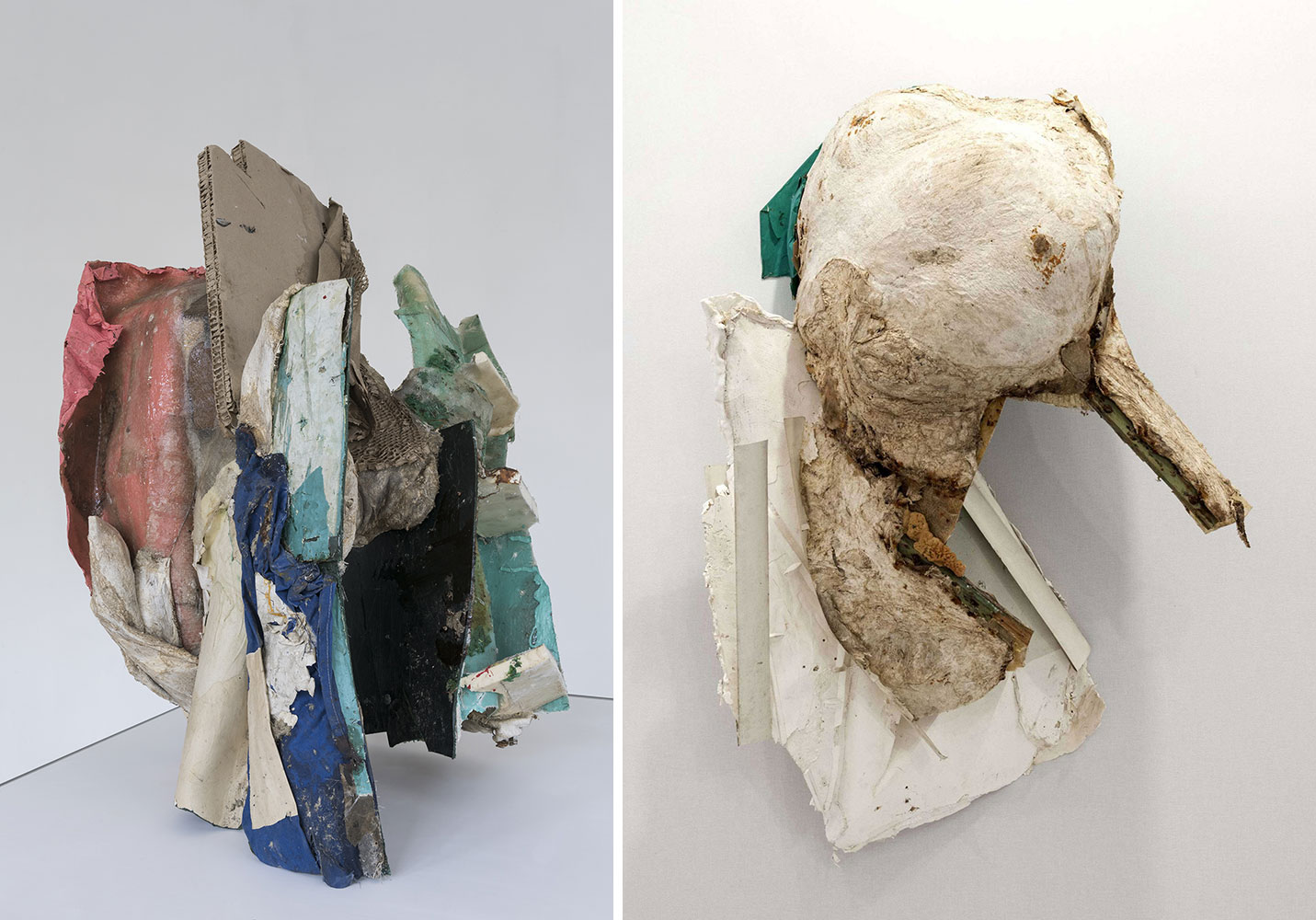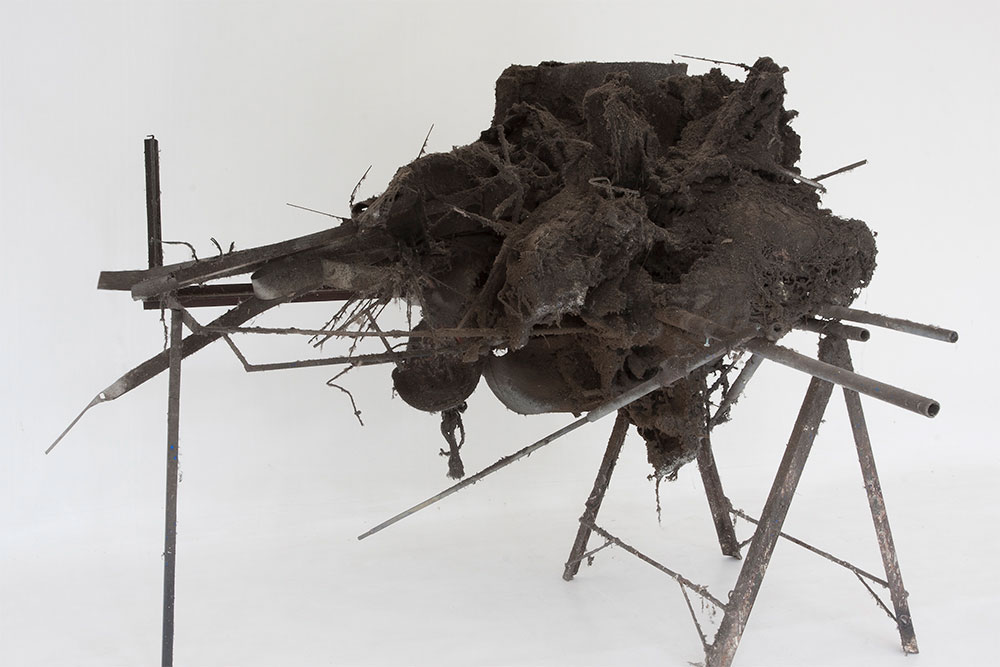ART-PREVIEW: Peter Buggenhout
 Peter Buggenhout ( born 1963, Dendermonde) lives and works in Ghent. About fifteen years ago, he stopped painting and divested himself of the limitations of canvas. Since then, he has been creating installations made of abject materials. His work is detached from every form of representation. This approach makes his sculptures autonomous.
Peter Buggenhout ( born 1963, Dendermonde) lives and works in Ghent. About fifteen years ago, he stopped painting and divested himself of the limitations of canvas. Since then, he has been creating installations made of abject materials. His work is detached from every form of representation. This approach makes his sculptures autonomous.
By Dimitris Lempesis
Photo: Bernier/Eliades Gallery Archive
Peter Buggenhout’s exhibition “Before the world has done its dirty job”, his first solo show in Athens, shows an overview of his complete oeuvre. Peter Buggenhout constructs sculptural installations out of industrial and found materials. At first sight, his works look like the remains of destroyed or abandoned structures. Beneath the constructions’ formal complexity, however, lies a carefully developed internal logic. Buggenhout works with what he describes as abject material: everyday objects detached from their original context and then reused. By covering many of his sculptures with dust, he attempts to neutralize any symbolic value. Most of Peter Buggenhout’s artworks can be seen from several angles, they do not have any fronts, backs, or preferred sides. No particular angle from which we need to look in order to fully comprehend, to an extent that when that are photographed (which implies a fixed view), they are often unrecognizable… Thus, his work strongly states the permanent instability of perspectives and of point of views, the multiplicity of possible interpretations. Peter Buggenhout’s work, through an analogical approach rather than symbolical, identifies this fundamental complexity (inability?) of understanding the world surrounding us, as we try to understand ourselves. His work bears witness to these relentless spiritual questionings, concerning our origins and future, which takes us in a complicated state of mind, forever swaying between reason and madness. To understand his universe we need to know that the sculptures, referring to the complexity of the world are developed in series. Despite of their interaction and mutual relationship expressing an ongoing evolution, each series stands on its own pronouncing its individual identity. As the artist says “It is never my intention to create a symbolic representation of what is commonly referred to as ‘chaos’. In fact, the main purpose is to undermine any semblance of symbolism. My attempt is to create a reality, analogue to that which we live in. One layer after another, the sculptures become large autonomous lumps of reality, referring only to themselves, without the least trace of simplification or symbolism. Hereby creating objects that given their complexity, are almost impossible to memorize, even for the perceptive spectator”. Buggenhout seeks to create an immediate experience of his sculpture, one without preconceived understanding or expectation. This tension between recognition and mystery remains at the core of his artist practice.
Photo: Peter Buggenhout, Mont Ventoux #44, 2021, wood, cow stomach, wax, cloth, isomo, epoxy, plastic, 68 x 107 x 89 cm, Courtesy: Peter Buggenhout & Bernier/Eliades Gallery | Photo Credits: Dirk Pauwels
Info: Bernier/Eliades Gallery, 11 Eptachalkou Street, Athens, Greece, Duration: 27/5-10/7/2021, Days & Hours: Tue-Fri 10:30-18:30, Sat 12:00-16:00, https://bernier-eliades.com


Right: Peter Buggenhout, Mont Ventoux #40, 2019, Tanned cow stomach, synthetic, plaster, bonded paper, aluminum, epoxy paste, polyester, 110 x 75 x 45 cm, Courtesy: Peter Buggenhout & Bernier/Eliades Gallery

